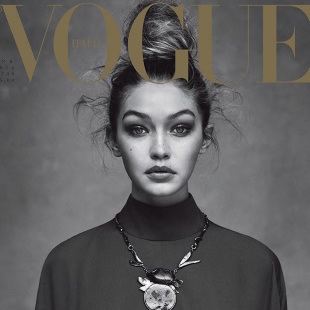Dan Grant, Next Canada agent since 2009, announced via Facebook on January 20th that he will no longer be at Next as of February 1st. «A guy can learn a lot in five years,» wrote Grant. «Especially in a fast-paced environment like a modelling agency. From social media to snapshots, nothing is like it was in 2009. This last half decade has been anything but boring. In fact, it’s been entirely fascinating. Now, however, it’s time to take my fascination elsewhere.»
His next move within or outside of the modelling industry remains unknown, but he will continue his scouting duties for Bravo Tokyo and continue running popular photography-incubator and blog Juried.
During his final week at Next, Dan took the time to talk to The Business Model about what he’s learned over the years.
TBM: When and how did you begin working in the modelling industry?
DG: Technically I started in 1997, when – with my “starter wife” – I bought an established agency in Saskatoon. It was actually more of a finishing school than an agency (as is common in smaller centers), but we did increase local bookings by more than 50% in the first year.
We divorced that same year, so the agency was sold off shortly after. I then moved back to my hometown of Calgary to launch my own agency, Grant Models, which is where I met my “keeper wife.”
TBM: What are the biggest changes you’ve seen globally? In Toronto?
DG: The biggest change globally has been the speed at which the industry moves. I remember faxing a model’s book from Saskatoon to Tokyo because she was short-listed for a very lucrative direct booking. Today, I share a DropBox link and twenty people can look at dozens of high-res images seconds later. Placing models overseas used to involve sending out physical packages to prospective agencies, then following up with Polaroids and mini-books for the models they were interested in.
Because everything is done electronically now, it’s also a lot less expensive to develop a model. The accounts used to build quickly with charges for faxing, couriering, Polaroids, long distance calling, paid tests, and prints.
The biggest change we’re seeing in Toronto is the ever-increasing American influence. IMG bought fashion Toronto fashion week, Lord & Taylor picked up the Hudson’s Bay Company and Target popped up all over the country. Saks and Nordstrom are just around the corner. Watch for e-Commerce to be a bigger piece of an expanding pie in the next few years.
A candid of Dan Grant with some of the Next family (L to R) Emily Fox, agent Katie Beaudry, Clodelle Lemay, Dan Grant, Aly, Jenna Earle, Drea Vujovic | Photo by Chantale Bergeron
A candid of Dan Grant with some of the Next family (L to R) Emily Fox, agent Katie Beaudry, Clodelle Lemay, Dan Grant, Aly,
TBM: What makes your job difficult? What makes it easier? (From models, clients, global trends, laws, etc.)
DG: Other agents make my job more difficult. Probably the most challenging aspect of my last five years has been trying to reset the bad habits other agents have enabled. I know it’s not popular to say this, but a lot of agents are pretty careless in the way they manage models – sending girls into situations where the photographer sees the model as a subject more than a person. These photographers then feel entitled to treat all girls a certain way, which makes it that much more difficult to deal with them when they ask me for options.
Technology has definitely made my job easier. From DropBox to IFTTT to the Eye-Fi card in my new FujiFilm camera, the new toolkit makes it even easier to get the models’ message out there.
TBM: Development and branding were huge parts of your job at Next, how do you determine the career options open to a new model?
DG: Development is paramount. Branding is secondary to that. Until you really know a model, their aptitude, attitude and availability it’s premature to start marketing them. So many agents are in such a rush to launch a new face that the model never has a chance to develop her confidence before being thrown into high-stakes situations. It might be good for the agency to get that initial hype, but it’s an awful thing to do to a young person.
Determining the model’s career path isn’t as simple as saying, “Your height limits you to Asia.” I think I actually said something like that to Ivy Matheson four years ago, and she set out to prove me wrong. Although she has done very, very well on that continent (check out the current cover of ELLE in Singapore), she’s now based in New York. A girl like that is proof that with persistence, personality and drive, “branding” is an evolutionary process.
TBM: There has been a lot of agitation for more diversity among models. How do you see the industry responding to ethnic, body, and age diversity?
DG: The industry is getting better, but a lot of people forget that modelling agencies operate at the whims of the broader fashion industry. Until stylists, editors and casting directors change, agencies can’t. It’s not fair to ask a model to invest in the demands of the industry if there aren’t clients that are open to hiring them.
As to the broader industry, everything happens in swings – from more inclusive to less inclusive – but real change will be generational.
TBM: Who is your favourite model of all time and why?
DG: Liisa Winkler. She really set the stage for the big Canadian models – Daria Werbowy, Heather Marks, Lisa Cant, Jessica Stam – that followed shortly after, by working with the top clients in the world and not letting it go to her head. She built a positive image of this country’s models at a time when the internet made it possible for clients to learn about a girl before speaking to her agent.
TBM: Which model(s)’s career(s) are you most interested in watching?
DG: Right now the ones I’m watching – for personal reasons – are Jenna Earle and Ivy Matheson. Both are the types that are going to be successful no matter what they do. I’m just grateful to have been a part of their modelling careers. I’ve had much less to do with Yana (Next, based in Vancouer), but I’m sure excited about her potential.
Of the ones I haven’t been involved with, Charlotte Cardin-Goyer (Folio) and Gracie van Gastel (LizBell).
TBM: What advice would you give to aspiring, new, or current models?
DG: For new and aspiring models: do your research. I get so many pathetic emails from people that signed with an agency without exploring their options. They get locked down to bullshit contracts that prevent them from reaching their potential because bookers get lazy when there’s no incentive to encourage loyalty.
Also, don’t expect anyone to invest in you if you aren’t willing to invest in yourself. As an agent sitting in an office all day, it’s hard not to be frustrated by models that have the opportunity to get to the gym most days, and choose not to. When you aren’t booking, it doesn’t mean you stop working… work on yourself.
For current models, be a positive influence on those starting out. If you’re comfortable getting naked, that’s great, but let the young ones know that it should only ever happen on their own terms. Spend time sharing your good and bad experiences with the new faces. Help them to put value in what they contribute to the industry.
TBM: What advice would you give to agents and bookers?






